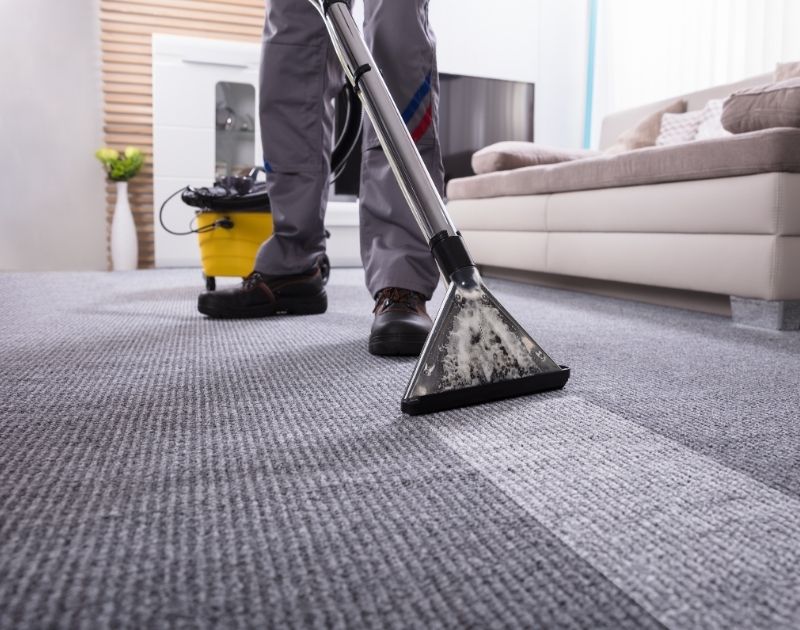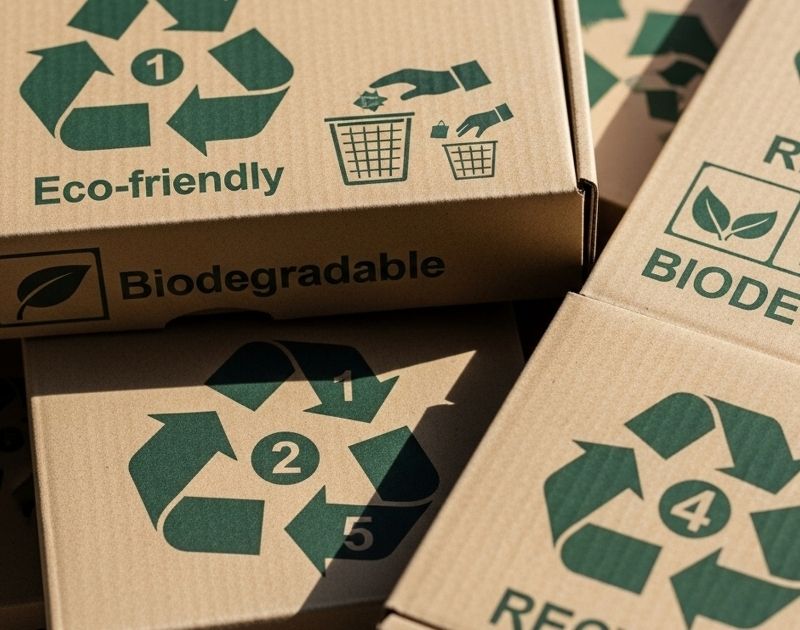Maintaining clean carpets isn’t just a matter of aesthetics—it’s a matter of health, safety, and professionalism. In office buildings, medical facilities, schools, and other commercial spaces, carpets are subjected to daily foot traffic, spills, and airborne particles. Over time, these contaminants build up, leading to odors, allergens, and visible wear. For business owners and facility managers, understanding how often to clean carpets (and how to do it correctly) is essential for maintaining a productive and professional environment.
As a trusted provider of Commercial Cleaning Services and Janitorial Services, Assett Commercial Services helps businesses across the U.S. develop customized cleaning schedules that preserve their carpet investments while keeping workplaces safe and healthy.
Why Carpet Cleaning Frequency Matters
Carpets are among the largest surfaces in any workplace, acting like filters that trap dust, pollen, dirt, and bacteria. This can be both beneficial and problematic. While carpets capture contaminants and prevent them from circulating in the air, they must be regularly cleaned to remove the buildup. Otherwise, they become a breeding ground for bacteria, allergens, and even mold.
Neglecting proper carpet maintenance can lead to:
-
Poor indoor air quality, causing respiratory issues or allergies
-
Increased wear and tear, leading to premature replacement costs
-
Unpleasant odors that give a negative impression to clients and employees
-
Unhygienic conditions, especially in medical or food-service environments
Regular professional cleaning protects both your carpet’s lifespan and your workplace reputation.
General Guidelines: How Often to Clean Workplace Carpets
There’s no universal schedule for every business. The right cleaning frequency depends on several factors including traffic, carpet material, climate, and type of facility. However, Assett Commercial Services follows a proven framework that balances visual cleanliness with long-term preservation:
| Type of Space | Vacuuming | Spot Cleaning | Deep Cleaning (Hot Water Extraction/Encapsulation) |
|---|---|---|---|
| Office areas (light traffic) | 2–3 times per week | As needed | Every 6–12 months |
| Lobby and entrances (high traffic) | Daily | Daily | Every 1–3 months |
| Conference rooms | Weekly | As needed | Every 6–9 months |
| Retail spaces | Daily | Daily | Every 2–4 months |
| Medical offices | Daily | Immediately | Every 1–3 months |
| Industrial facilities | Daily | As needed | Every 3–6 months |
| Schools and childcare centers | Daily | Daily | Every 1–2 months |
These are baseline recommendations—Assett Commercial Services can adjust cleaning frequencies based on your facility’s exact usage patterns, flooring type, and budget.
Factors That Determine Cleaning Frequency
1. Foot Traffic Volume
The most important variable is how much foot traffic your carpets experience. A quiet insurance office with ten employees won’t accumulate dirt at the same rate as a busy manufacturing facility or medical clinic.
High-traffic areas (lobbies, corridors, break rooms, entrances) should be cleaned daily, while low-traffic zones (executive offices or conference rooms) can follow a less frequent schedule.
2. Type of Business
Every industry presents unique challenges:
-
Medical and dental offices must adhere to strict hygiene standards, often requiring carpet cleaning every 1–3 months.
-
Retail stores and restaurants deal with heavy public traffic, spills, and dirt tracked in from outside.
-
Corporate offices typically schedule quarterly or semi-annual deep cleans.
-
Educational facilities should clean monthly or bi-monthly to protect children from allergens and bacteria.
3. Seasonal Changes
During rainy or snowy months, moisture and salt can damage carpet fibers and backing. In dusty climates, airborne debris settles faster. Adjust your cleaning schedule seasonally to offset these factors.
4. Carpet Material and Color
Some carpets hide dirt better than others—but that doesn’t mean they’re clean. Darker carpets or patterned designs can disguise buildup that would be obvious on lighter shades. Nylon and olefin carpets are more durable, while natural fibers like wool require gentler methods and more frequent maintenance.
5. Indoor Air Quality and Health Standards
Carpets play a major role in maintaining indoor air quality (IAQ). Facilities subject to OSHA, LEED, or healthcare cleanliness standards need to adhere to a structured cleaning plan. Dust, pollen, and bacteria accumulate quickly in carpet fibers, affecting both employees and visitors.
The Science Behind Carpet Cleaning Intervals
It’s easy to underestimate how quickly contaminants accumulate in carpet fibers. A study by the Carpet and Rug Institute (CRI) found that a carpet can hold up to four times its weight in dirt before it even looks dirty. That means visual inspection alone is not a reliable guide.
Assett Commercial Services emphasizes a preventive maintenance model, meaning you clean before carpets appear dirty—not after. This extends the lifespan of the carpet by reducing fiber abrasion and keeps the workplace consistently fresh.
Our approach often involves:
-
Daily soil removal through high-efficiency vacuuming with HEPA filtration
-
Frequent spot and spill treatment using low-moisture cleaning agents
-
Interim encapsulation cleaning to remove surface dirt and refresh appearance
-
Periodic hot water extraction for deep sanitization
This layered approach maximizes hygiene while minimizing downtime and cost.
Vacuuming: The Daily Foundation of Carpet Care
Vacuuming is the single most important component of carpet maintenance. Regular vacuuming removes about 80% of dry soil, which prevents it from becoming embedded in carpet fibers.
Assett Commercial Services uses commercial-grade vacuums equipped with HEPA filters to capture fine dust and allergens. We also rotate vacuuming patterns and use edge-cleaning attachments to ensure corners and baseboards are properly maintained—areas where debris tends to accumulate unnoticed.
For most workplaces:
-
High-traffic areas: Vacuum daily
-
Moderate-traffic areas: Vacuum every other day
-
Low-traffic areas: Vacuum twice per week
Spot Cleaning: Immediate Action Prevents Permanent Damage
Spills and stains are inevitable, but how quickly they’re addressed determines the long-term appearance of your carpet. Coffee, ink, and grease can become permanent if not treated immediately.
Assett Commercial Services trains its janitorial staff to identify and treat stains quickly using pH-balanced solutions that protect fibers and dyes. For workplaces without a full-time cleaner, having a basic carpet-spotting kit available (with clean towels, mild detergent, and enzyme cleaner) helps prevent buildup between professional visits.
Deep Cleaning: The Key to Long-Term Carpet Health
Even with regular vacuuming and spot cleaning, carpets eventually require professional deep cleaning to remove embedded soil, oils, and allergens. The two most common methods are:
-
Hot Water Extraction (Steam Cleaning)
-
Deep cleans and sanitizes carpet fibers
-
Recommended every 6–12 months for most office areas
-
Ideal for restoring high-traffic zones
-
-
Encapsulation Cleaning
-
Uses polymer-based solutions to crystallize dirt for easy vacuum removal
-
Faster drying time (1–2 hours)
-
Effective for maintenance between deep cleans
-
Assett Commercial Services combines these methods strategically, depending on the carpet type, level of soiling, and facility needs.
Carpet Care for Specific Workplace Types
1. Office Buildings
Carpeted offices often contain coffee spills, tracked-in dirt, and fine dust. Vacuuming 3–5 times per week and deep cleaning twice per year is a solid baseline. Entry mats at all doors reduce soil infiltration dramatically.
2. Medical Facilities
Cleanliness directly affects patient safety and regulatory compliance. Assett recommends daily vacuuming, immediate spill response, and monthly deep cleaning for exam rooms, waiting areas, and hallways.
3. Educational Institutions
Schools experience high traffic and constant movement between indoor and outdoor environments. Daily cleaning and monthly extraction are essential for reducing allergens and maintaining air quality.
4. Retail and Hospitality
Because first impressions matter, retail carpets should be deep cleaned every 1–3 months. Entryways, aisles, and checkout areas see the heaviest soil load.
5. Industrial or Warehouse Offices
Though industrial floors are often concrete or epoxy, carpeted office sections adjacent to these areas attract significant debris. Daily vacuuming and quarterly cleaning prevent grime transfer.
Cost Benefits of a Preventive Carpet Maintenance Program
Replacing commercial carpet can cost anywhere from $3 to $8 per square foot, not including labor or business disruption. Regular professional cleaning—typically a fraction of that cost—extends carpet life by years.
Assett clients often find that structured maintenance reduces replacement frequency by 30–50% while enhancing brand image and employee satisfaction. Clean carpets also contribute to a healthier work environment, potentially lowering absenteeism caused by allergens and respiratory issues.
Signs It’s Time for Professional Carpet Cleaning
Even with a set schedule, you should monitor your carpets for signs that they need attention sooner than planned:
-
Persistent odors, even after vacuuming
-
Visible stains or discoloration
-
Flattened fibers or matted areas
-
Increased allergy symptoms among staff
-
Dull or uneven appearance in high-traffic areas
If any of these occur, it’s time to call in a professional Janitorial Services provider like Assett Commercial Services to restore your carpets before damage becomes permanent.
How Assett Commercial Services Maintains Workplace Carpets
At Assett Commercial Services, our carpet care programs are customized for each client’s facility type, traffic level, and industry standards. We go beyond simple cleaning to ensure carpets contribute positively to the work environment.
Our process includes:
-
On-site assessment of carpet type, soil levels, and wear patterns
-
Customized cleaning schedule integrated into your overall janitorial plan
-
Low-moisture cleaning methods to minimize downtime
-
Green-certified products safe for sensitive environments
-
Trained and background-checked technicians with years of experience
-
Quality inspections to ensure consistent results across all service visits
We also integrate carpet care with other maintenance tasks—like tile and grout cleaning, dusting, and air duct cleaning—to deliver a comprehensive solution.
Creating a Carpet Cleaning Plan That Works
Here’s how to build a plan that keeps your carpets looking their best year-round:
-
Assess usage patterns – Identify high-traffic and low-traffic zones.
-
Schedule routine maintenance – Assign daily, weekly, and monthly cleaning tasks.
-
Integrate professional cleanings – Use quarterly or biannual deep cleaning to reset fibers.
-
Communicate with your cleaning provider – Share concerns, spills, or problem areas immediately.
-
Track and adjust – Review carpet conditions each quarter to refine the cleaning plan.
With Assett’s data-driven approach, we can help you calculate optimal cleaning intervals that balance cleanliness, cost, and carpet longevity.
Conclusion: Clean Carpets, Clean Reputation
Carpet cleaning frequency isn’t just a maintenance decision—it’s a reflection of your organization’s standards. A clean, fresh-smelling carpet signals professionalism to employees and visitors alike. Whether you manage an office suite, retail location, or medical practice, consistent carpet maintenance preserves both your flooring and your reputation.
Assett Commercial Services delivers dependable Commercial Cleaning Services and Janitorial Services designed to meet your facility’s exact needs. Our expert technicians, high-performance equipment, and customized schedules ensure your carpets stay clean, healthy, and long-lasting—all while minimizing disruption to your business.
Ready to Refresh Your Carpets?
Contact Assett Commercial Services today to schedule a carpet assessment or request a custom cleaning quote for your facility.




